blog
Why Babies Need to Eat Healthy Fats. Our Favorite Oily Fish Recipes.

We asked Registered Dietician, Nicole Silber, RD, CSP, CLC, for her take on the USDA’s 2020-2025 Dietary Guidelines for Americans. Nicole is a board-certified specialist in pediatric nutrition and has worked with hundreds of children with chronic medical conditions, food allergies, picky eating, oral-motor and sensory processing disorders, breastfeeding, gastrointestinal conditions, prematurity and obesity.
Among the types of food groups recommended by the 2020-2025 Dietary Guidelines for Americans, healthy fats were cited as a key nutrient needed during infancy and toddlerhood for brain development. Babies and toddlers also rely on dietary fat for general growth, as it is a great source of calories. (Fat has more calories per gram compared to protein or carbohydrates.) Fats are also needed for absorption of other key nutrients, such as fat-soluble vitamins A, D, E and K. Simply put, adding foods high in healthy fats helps to make your infant or toddlers’ diets more nutritionally dense.
Types of Healthy Fats
Healthy fats are monounsaturated and polyunsaturated fats. Of particular importance for developing babies and children are the two types of long chain, polyunsaturated fatty acids, omega 3s and omega 6s. These are essential, as our bodies do not make them on our own: we must get them from food or other sources.
Omega 3’s, particularly DHA, have been shown to play critical roles in supporting the development of the immune system, brain development, vision, heart health and even sleep and concentration. DHA levels found in breast milk can vary depending on maternal levels, diets, and supplementation, while all U.S. infant formulas are fortified with DHA. As complementary or solid foods are introduced, around 6 months, it is important to introduce foods specifically rich in DHA, to all infants, so they receive the health benefits and grow a taste for these foods. There is no agreed upon daily amount of DHA for infants, but the National Institutes of Health recommends toddlers one to three years eat 700 mg of omega 3’s per day.
Food Sources of Healthy Fats 🥜 🥑 🐟 🍳
- Fatty fish – choose low mercury fish, such as salmon and cod
- Nuts and seeds, like tree nuts, hemp seeds, chia seeds, and flax seeds
- Certain plant-based oils like olive, flaxseed, walnut, avocado and algae oil
- Avocado
- Eggs fortified with DHA

Ideas for Introducing and Encouraging Healthy Fats
- Introduce fatty fish early! It blends very well with purees of green vegetables, like green beans, or served as finger foods, depending on the age of the baby. Fish is a potential food allergen, but new recommendations are to introduce allergens around the age of 6 months. The earlier and more frequently it is introduced, the more likely that baby will adapt a taste, and preference for it.
- Fish can be served on its own, baked. One simple way to prepare salmon or cod is roasted in the oven topped with pesto. Fish can also be turned into patties, or fish burgers by combining with eggs and whole wheat breadcrumbs, and frozen for future meals. Or, next time you make tacos for your toddlers, swap the chicken or beef for fish and serve it with their favorite fillings and spreads!
- Try these great & easy fish recipes
- Offer avocado on its own, mash onto toast or blend with foods like eggs.
- Sprinkle ground chia, flax, or hemp seeds on top of oatmeal, smoothies, or yogurt.
- Top whole wheat bread with spreads like hummus or smooth, unsweetened, moist nut butters like peanut butter.
- Serve fruit with unsweetened nut butters.
- Drizzle olive oil onto whole grains and vegetables.
- Serve DHA-fortified-eggs on their own as finger foods or mashed or pureed with another fruit of vegetable. Eggs are a potential food allergen, but new recommendations are to introduce allergens as other complementary foods are introduced.
Ways to Limit Saturated Fat
Once children turn two years old, begin to limit the saturated fat, typically found in animal proteins, like red meat and dairy. Unfortunately, studies have shown that children and toddlers consume too much saturated fat. Here are some tips for cutting back.
- Switch to reduced or low-fat milk and dairy at 2 years.
- When cooking, replace butter with healthy fats like olive oil.
- Swap fried foods like vegetables and proteins for baked options.
- Switch to leaner fat cuts of meat and poultry.
- Remove skin off poultry.
- Replace some meat-based meals for plant-based meals that highlight whole grains and legumes. For example, instead of making tacos with chicken, beef, and cheese, let the beans and avocado be the star.

Nicole is the creator of Tiny Tasters, a series of on-demand and live classes that teach parents everything they need to know about how to feed their babies and toddlers. Prior to her current roles she was a clinical nutritionist at the Morgan Stanley Children’s Hospital at New York-Presbyterian/Columbia and at NYU Langone/Fink Children’s Ambulatory Care Center. Nicole lives in New York with her husband and her toddlers, Lily and Luna!
To read more about the Dietary Guidelines for Americans 2020-20205, click here.


